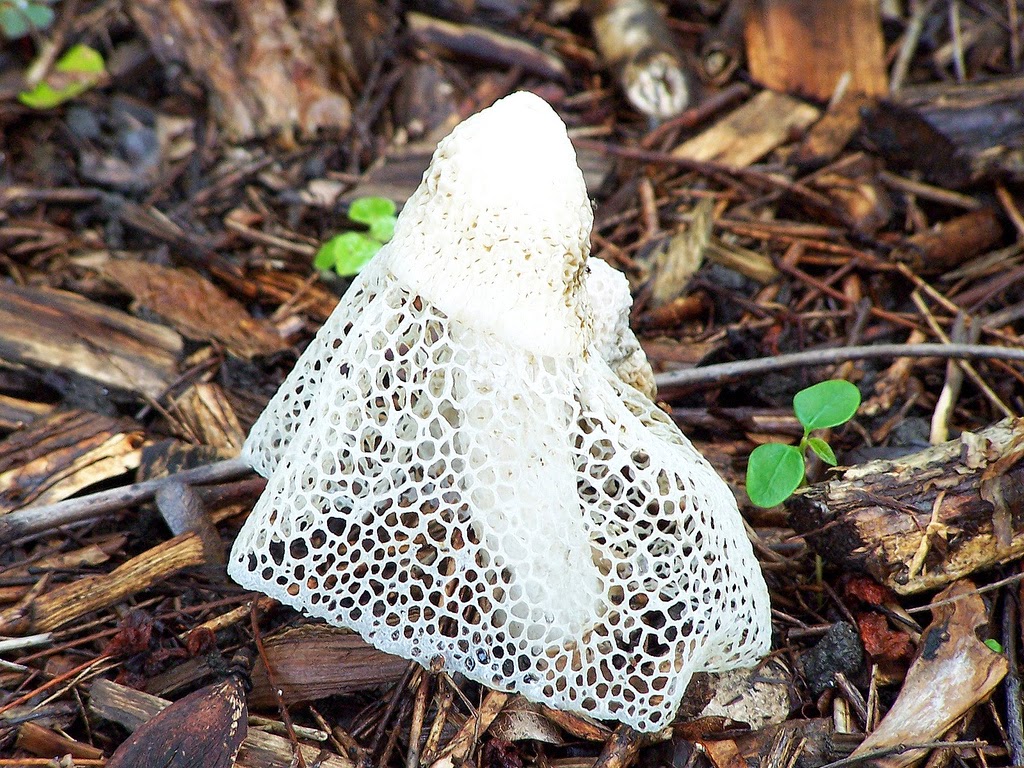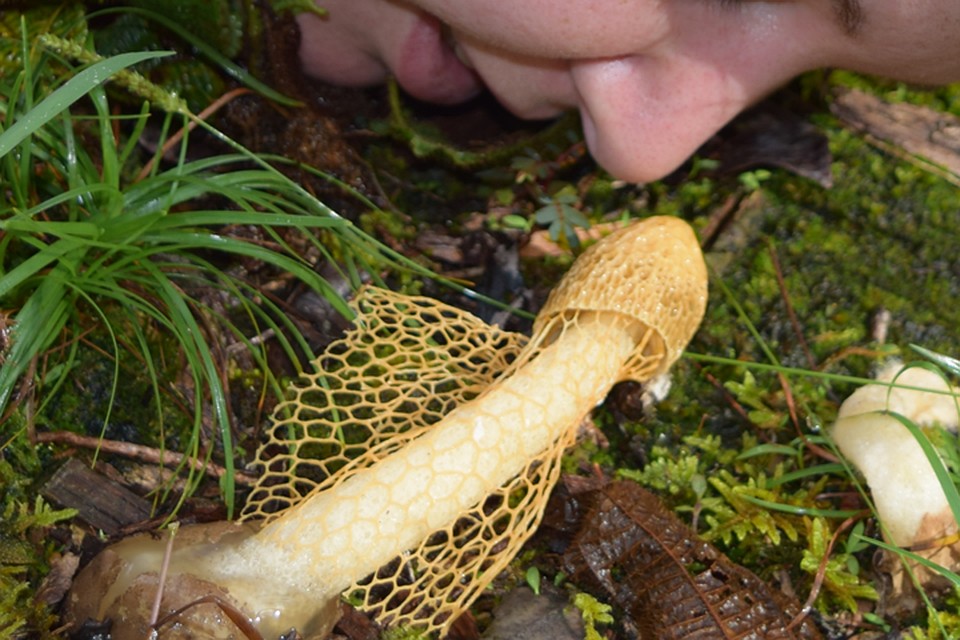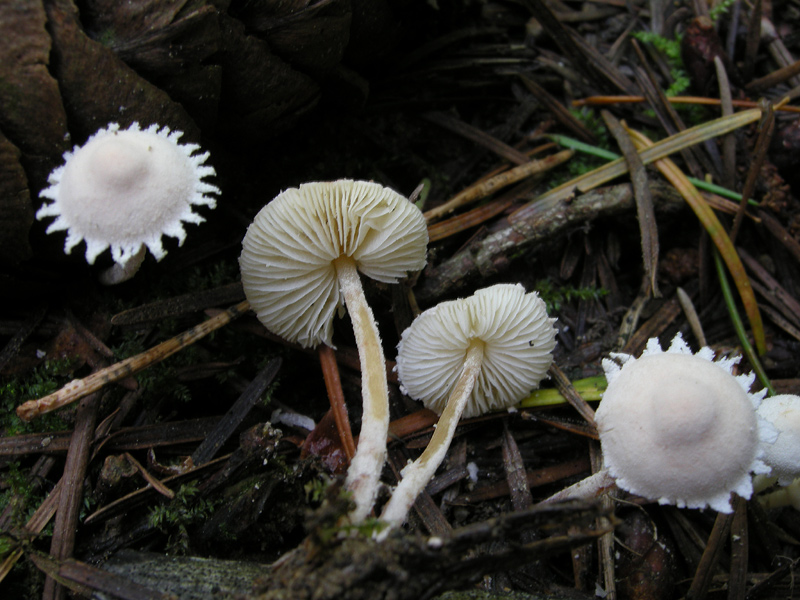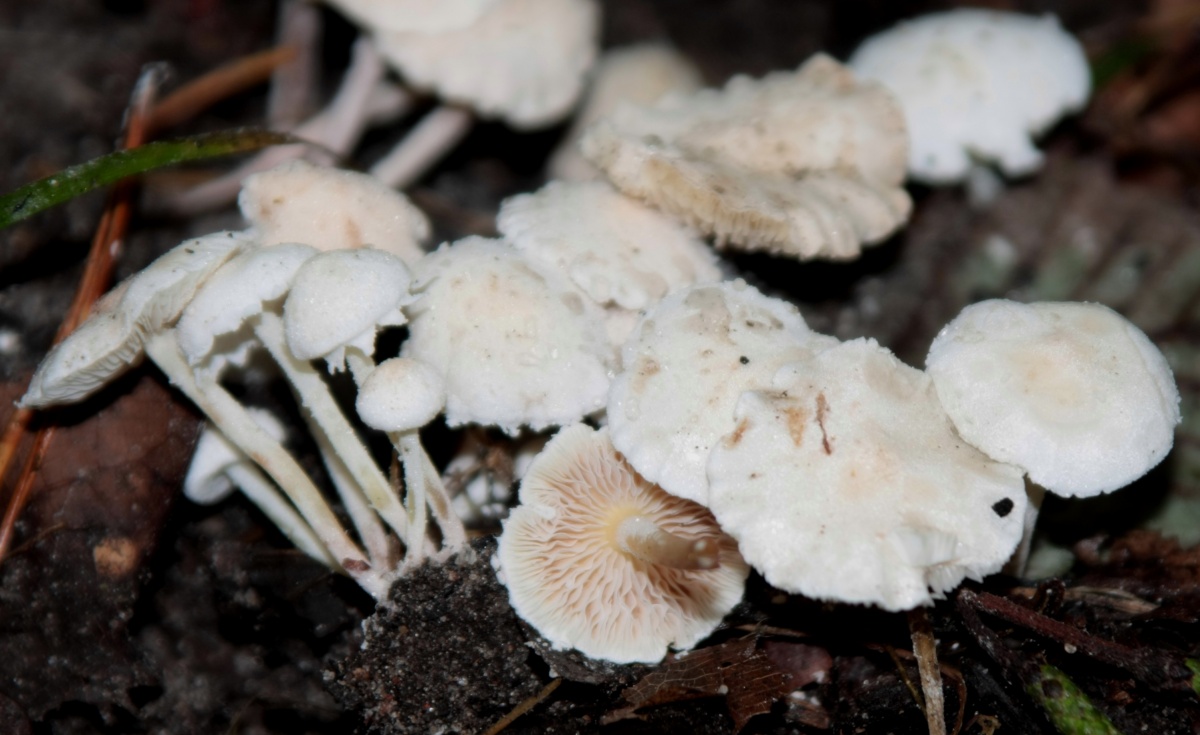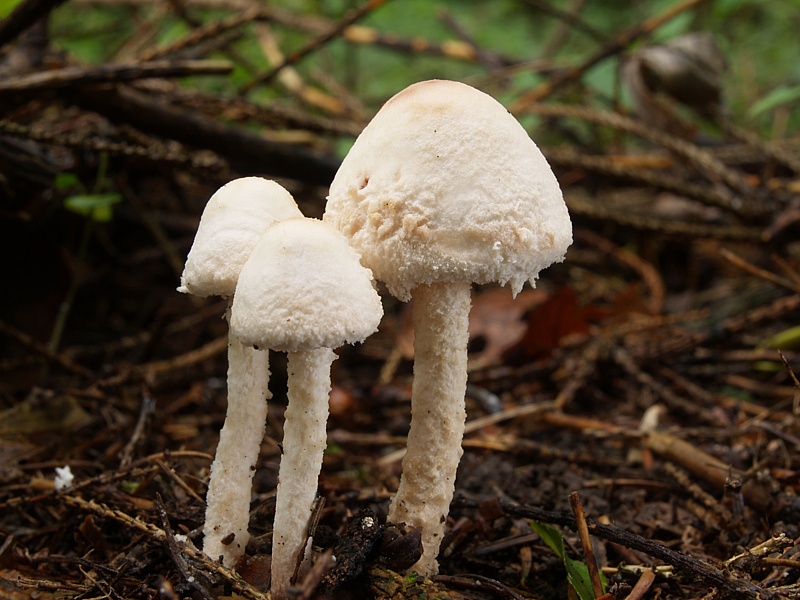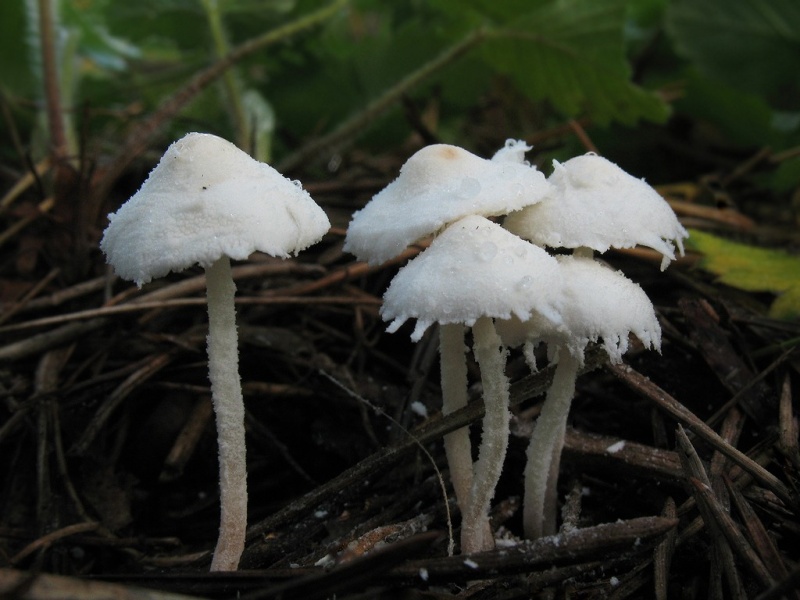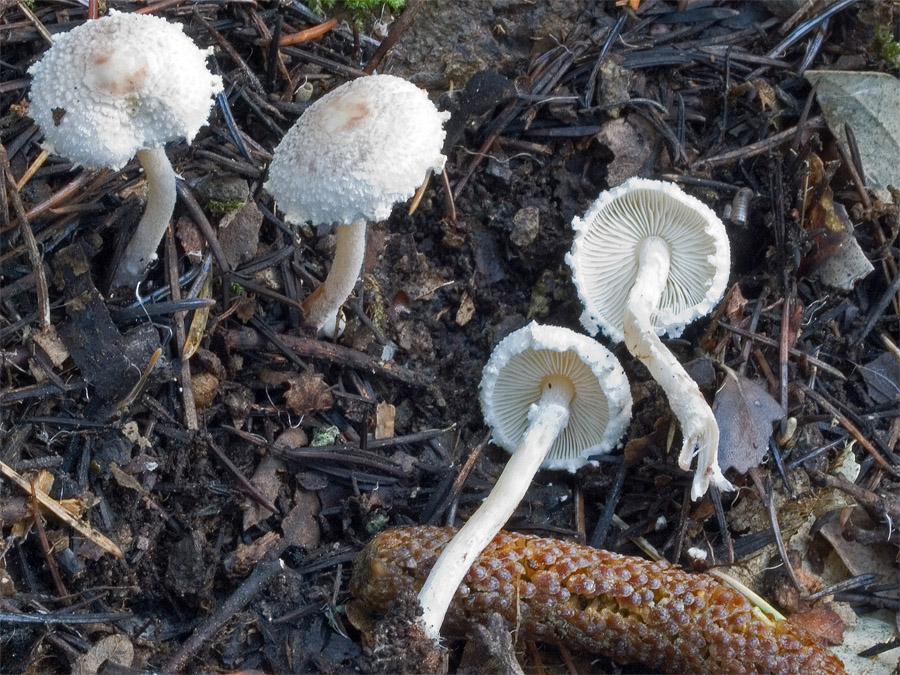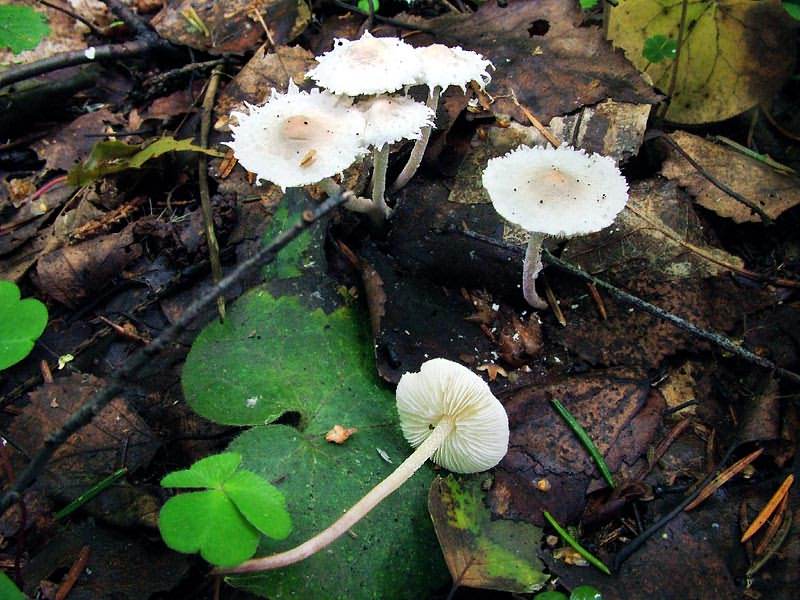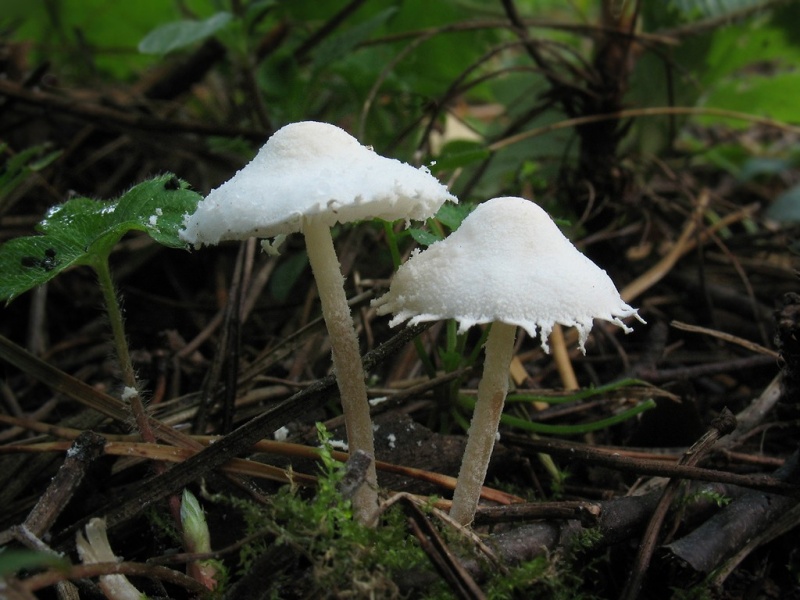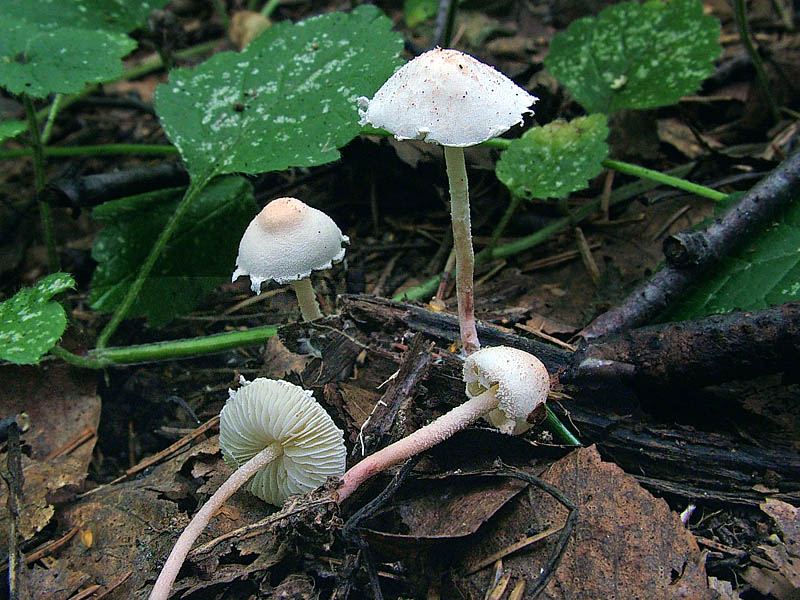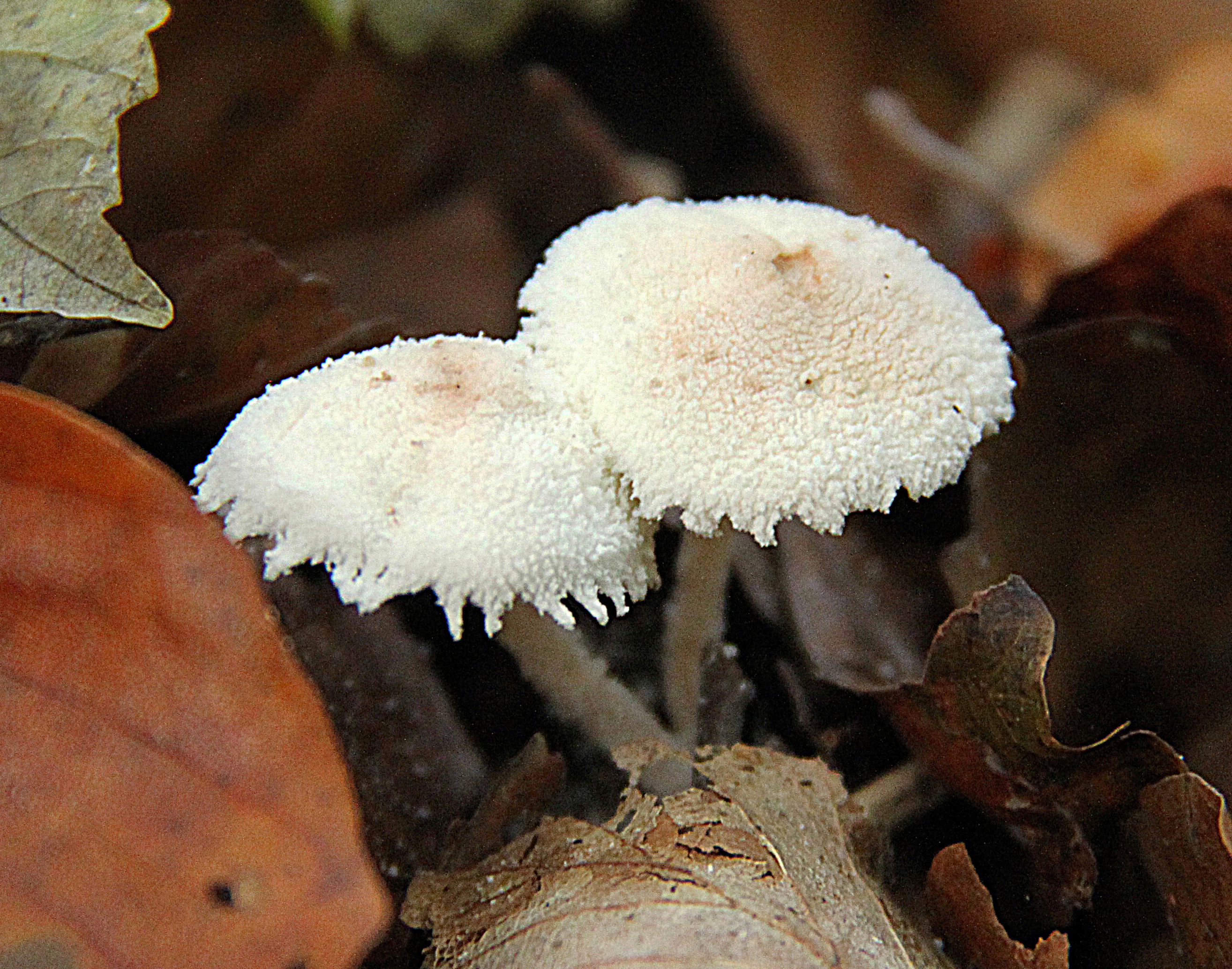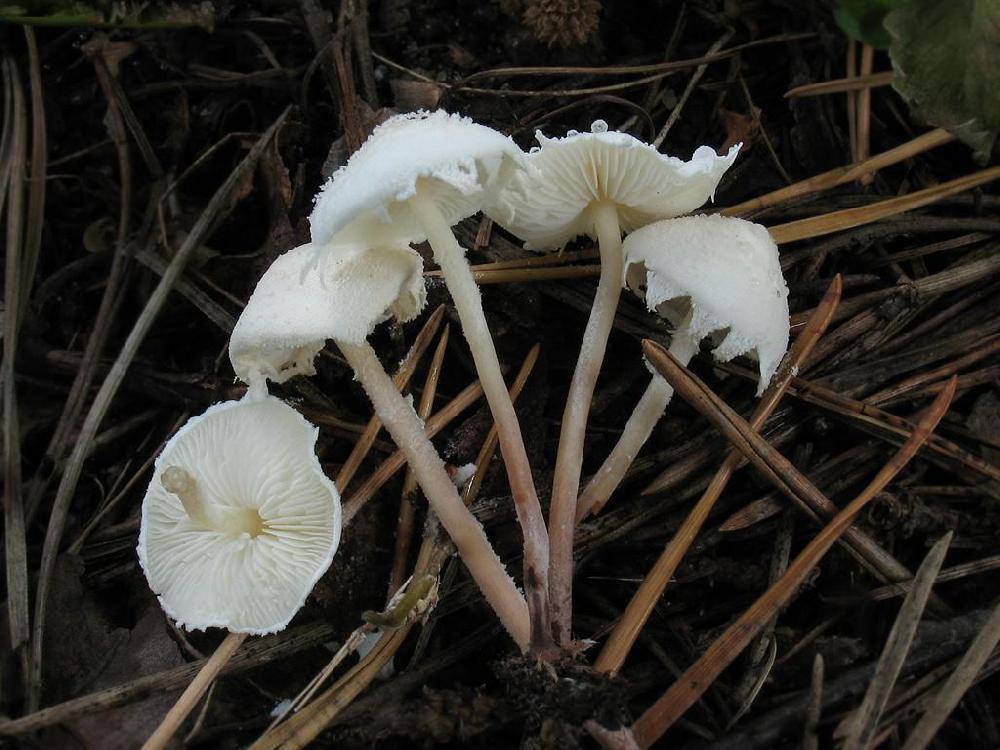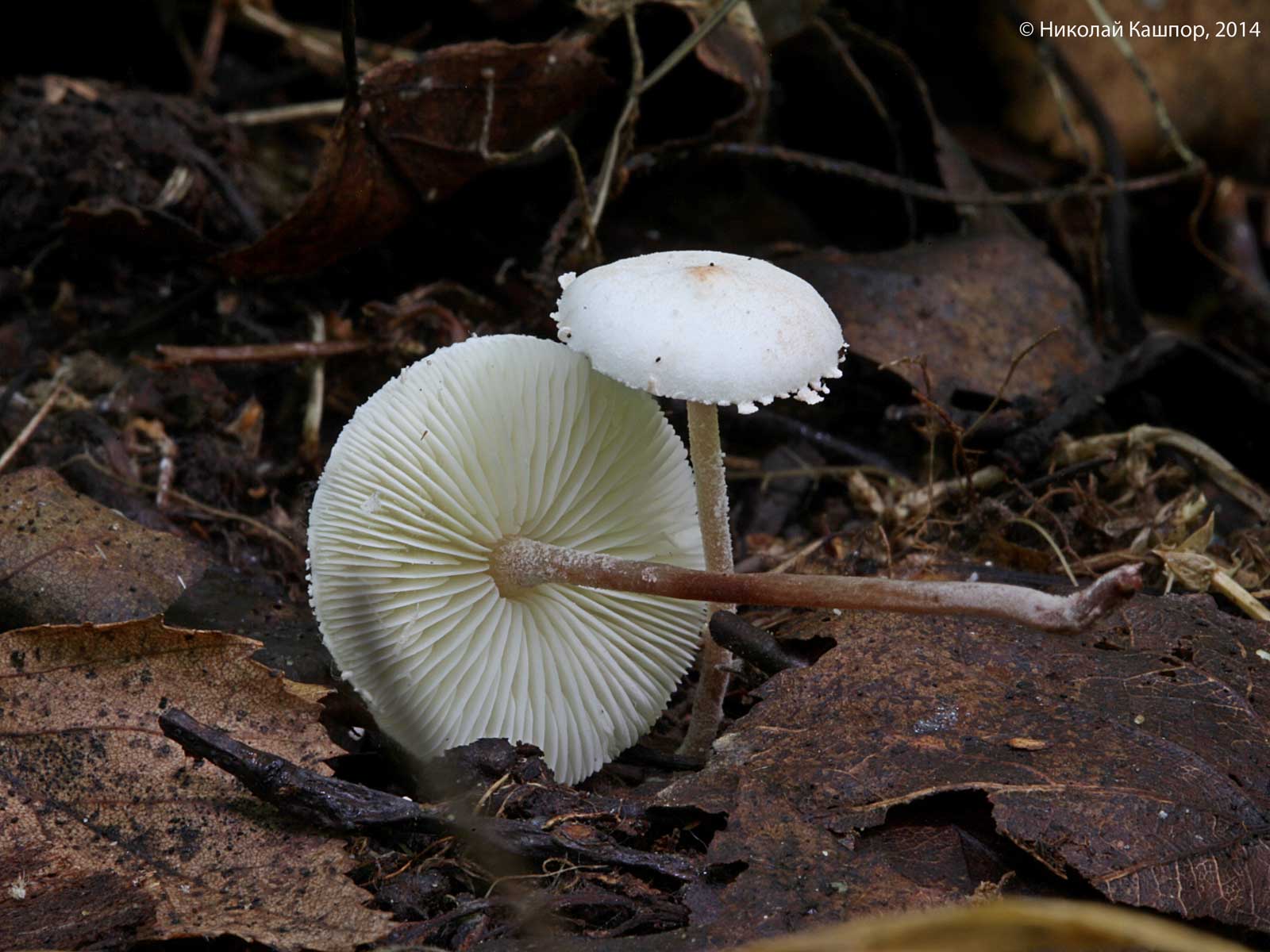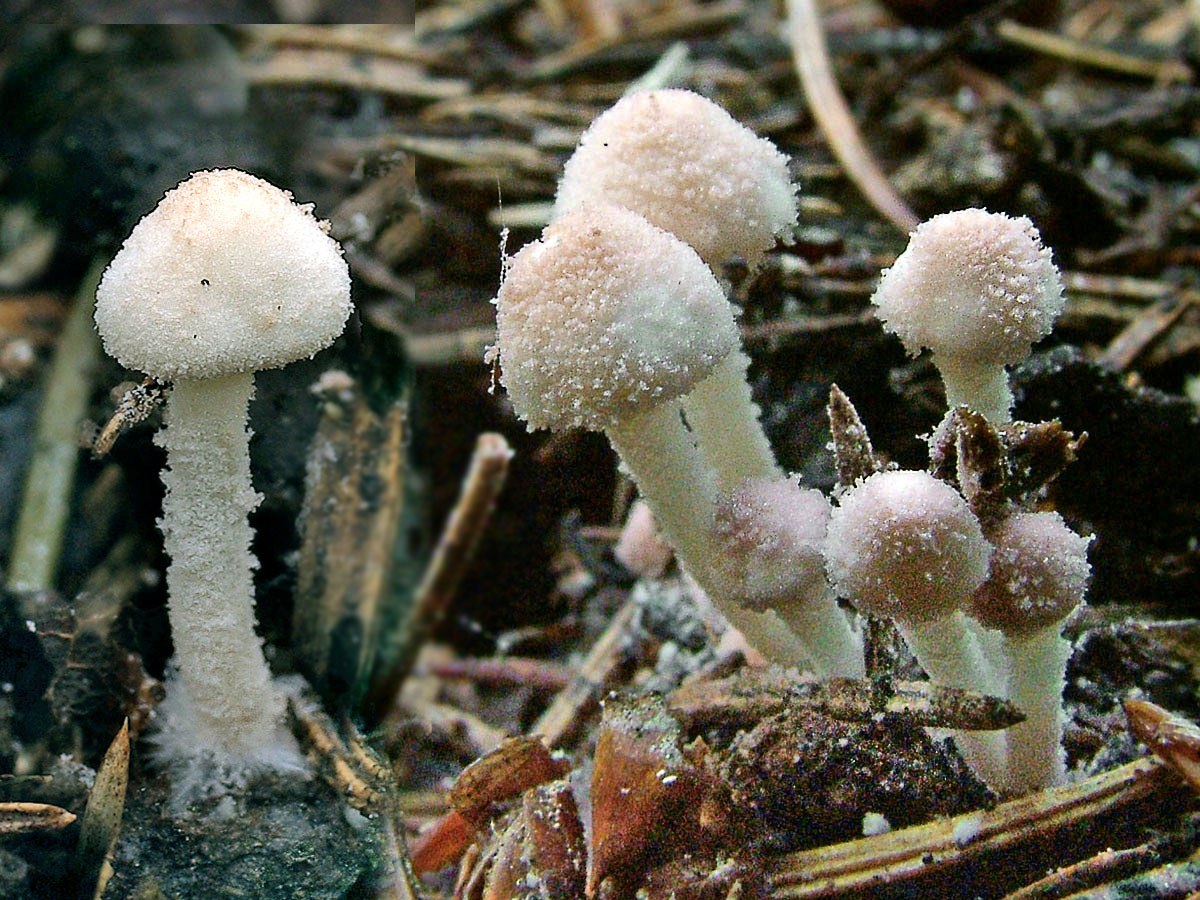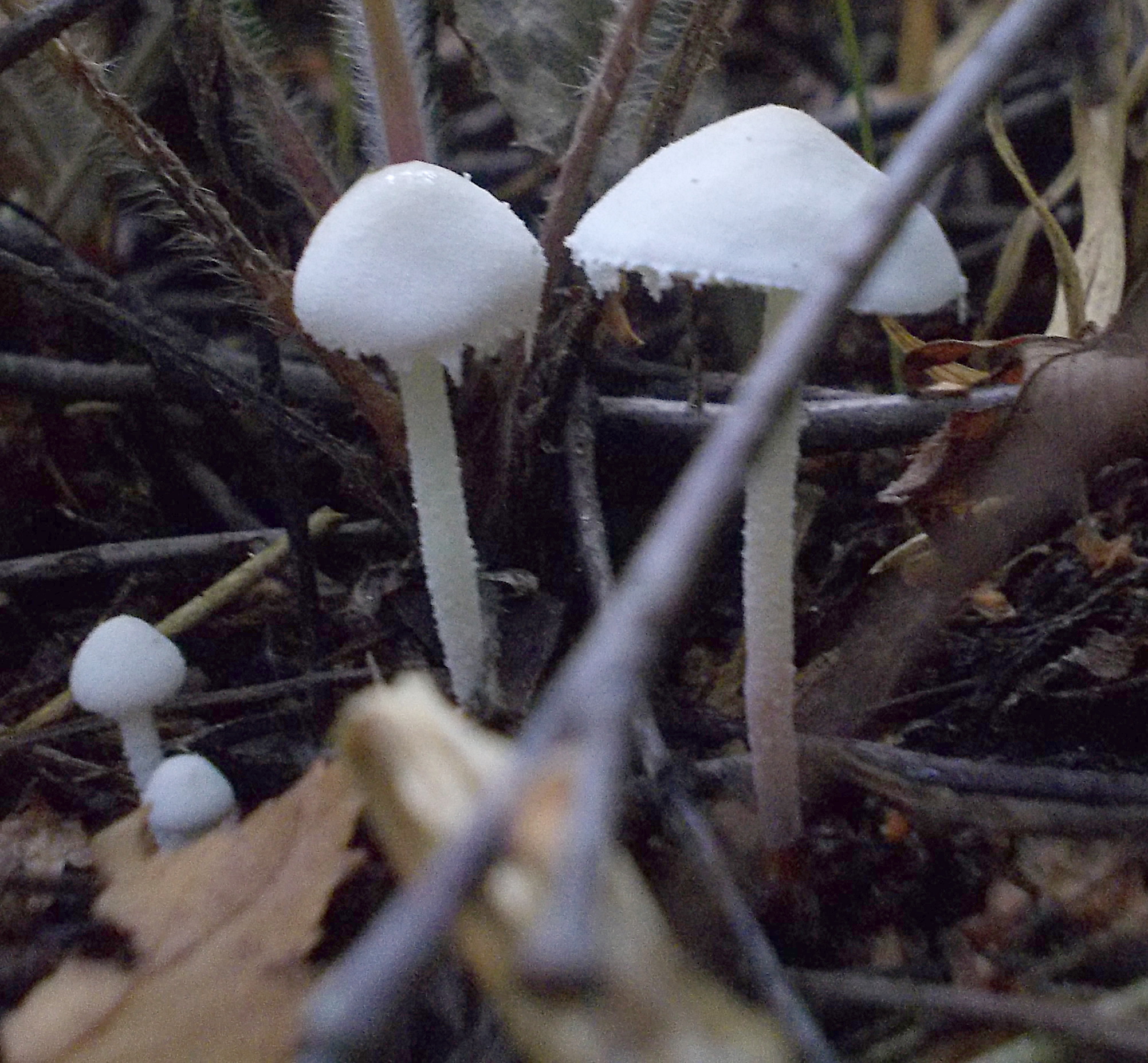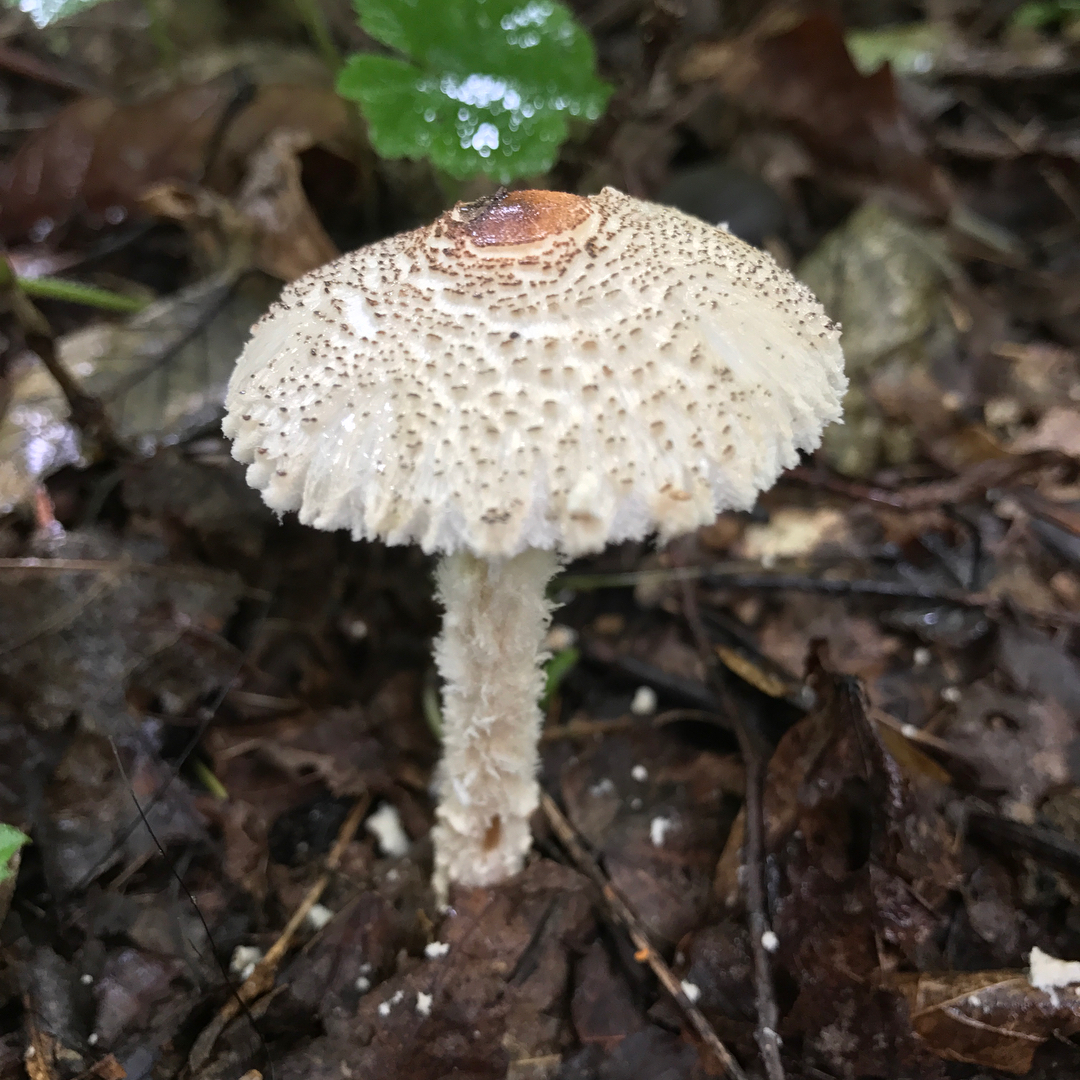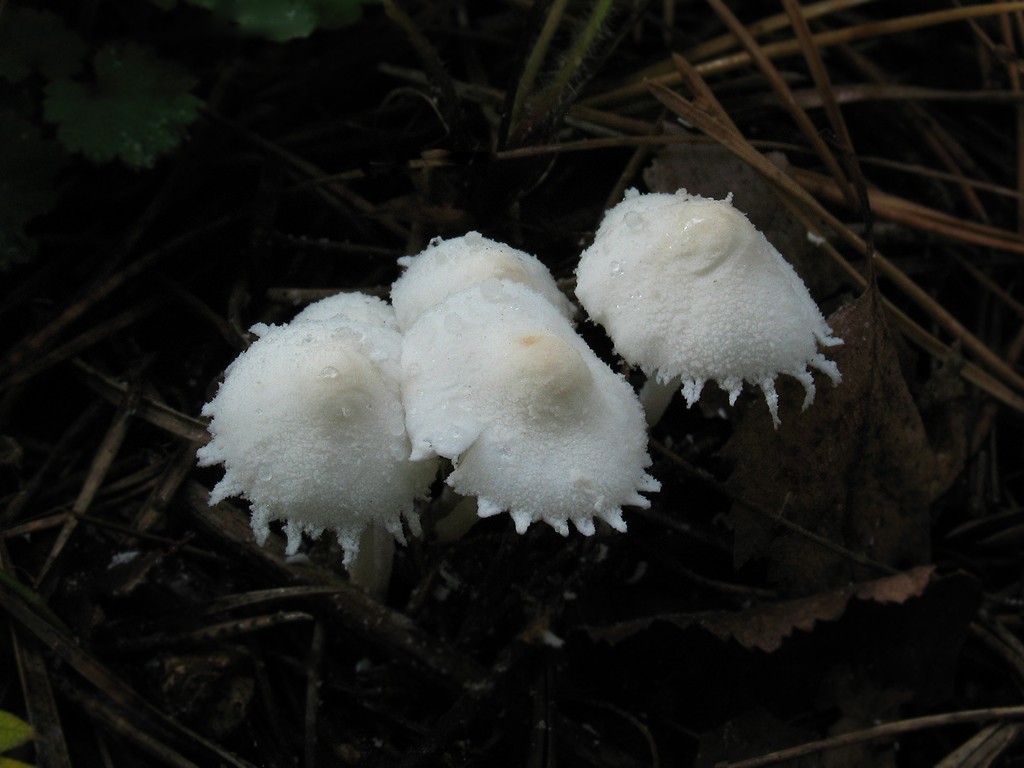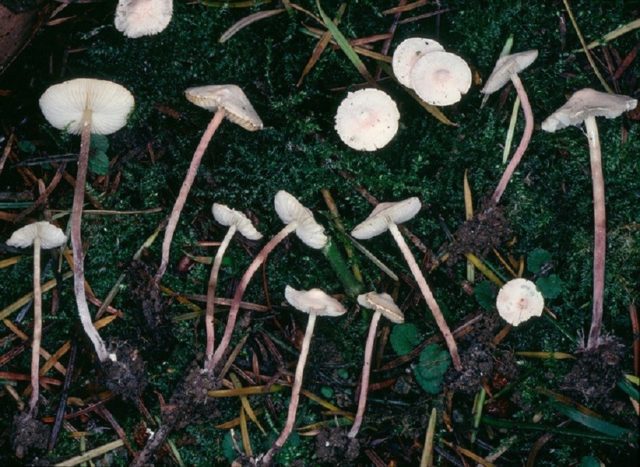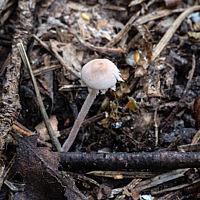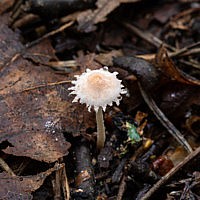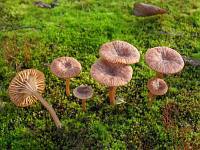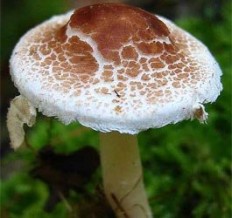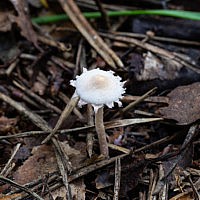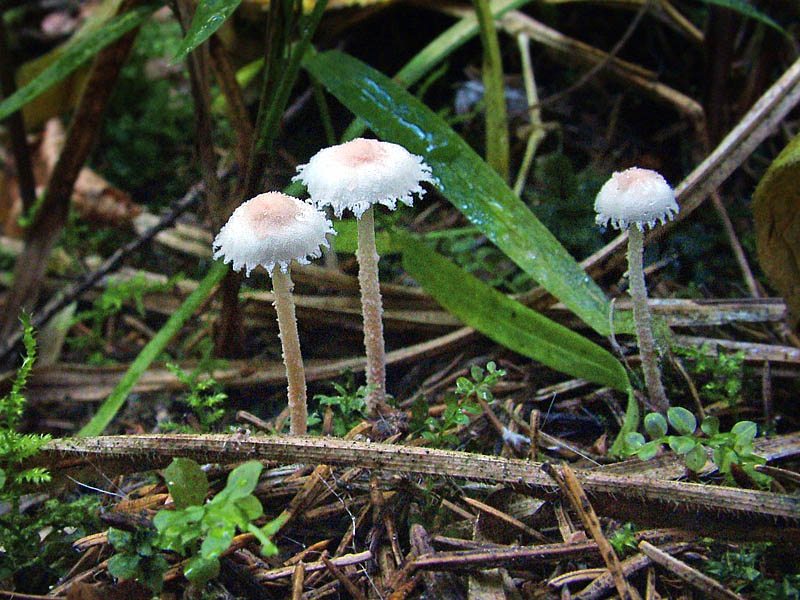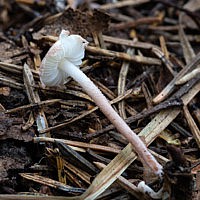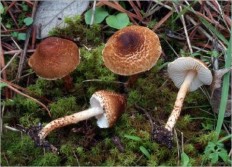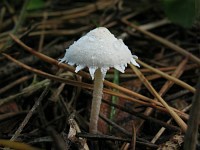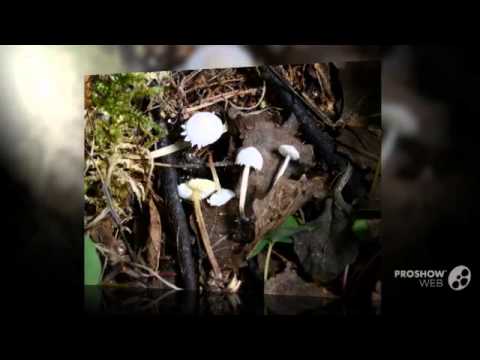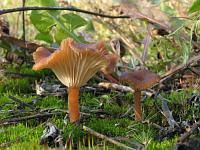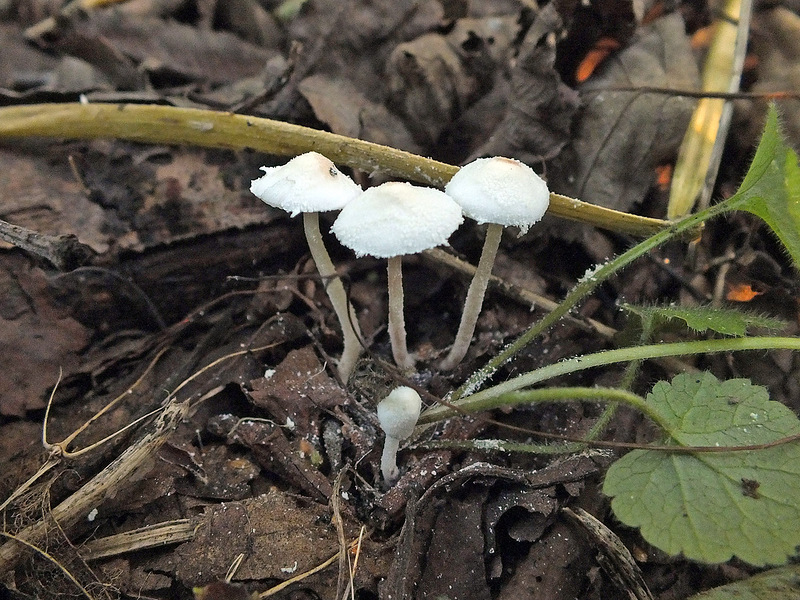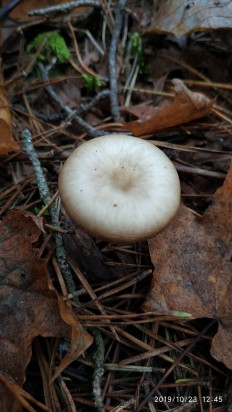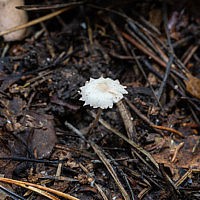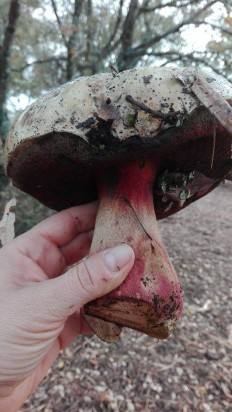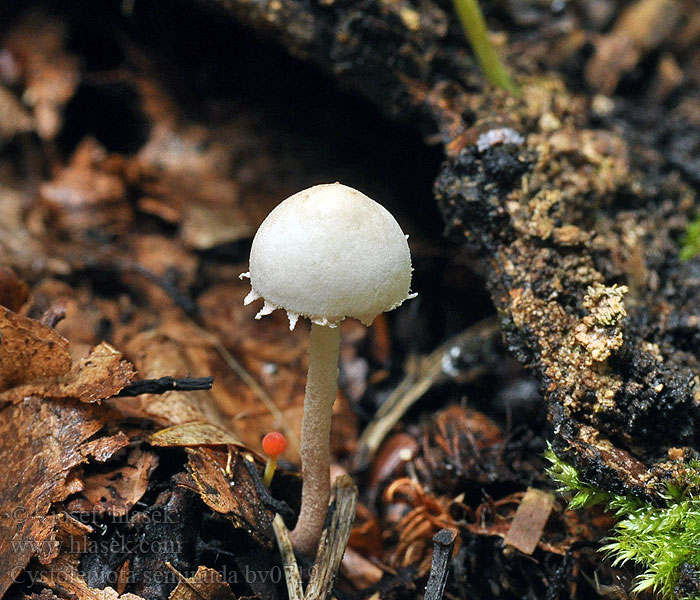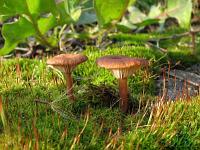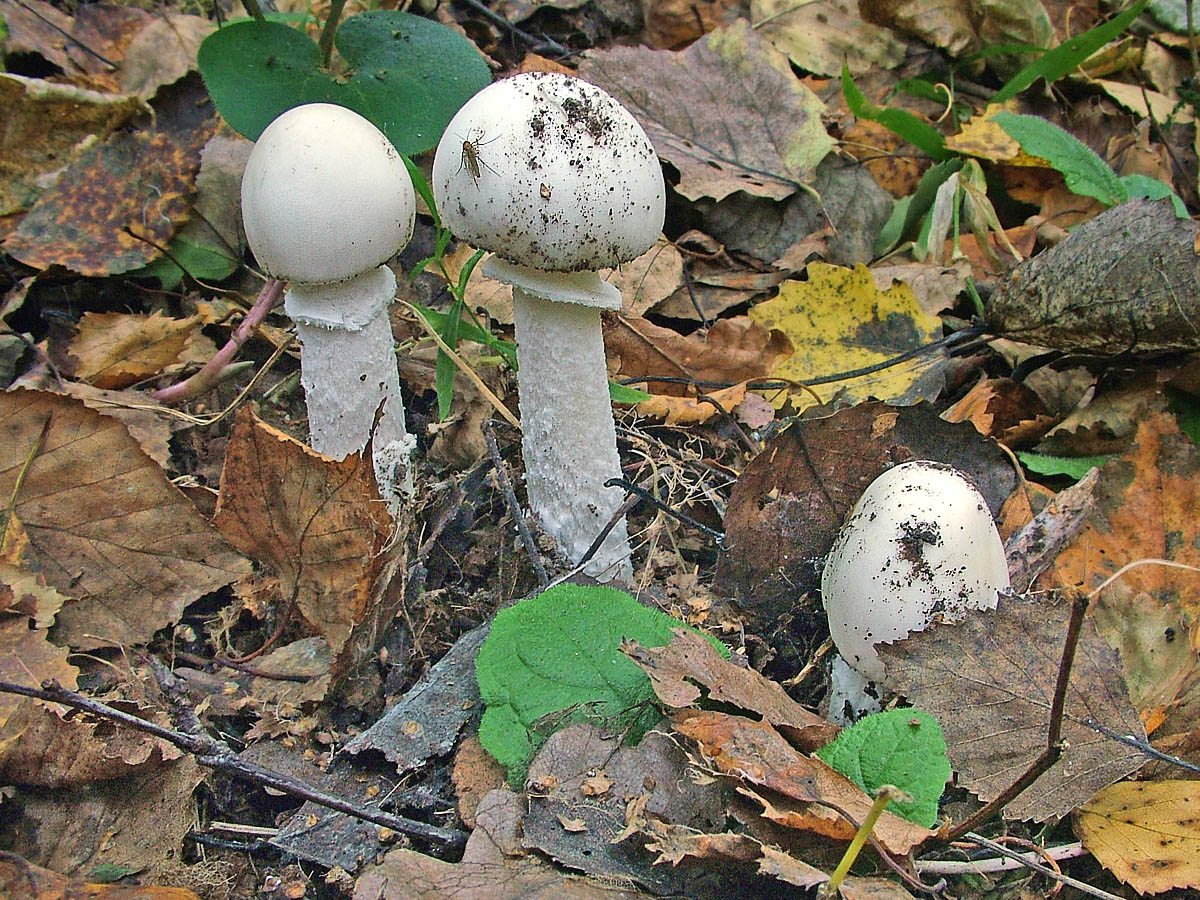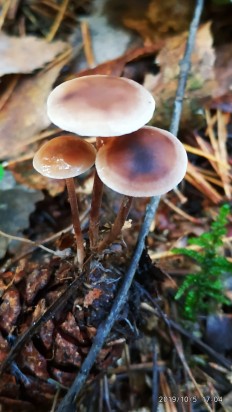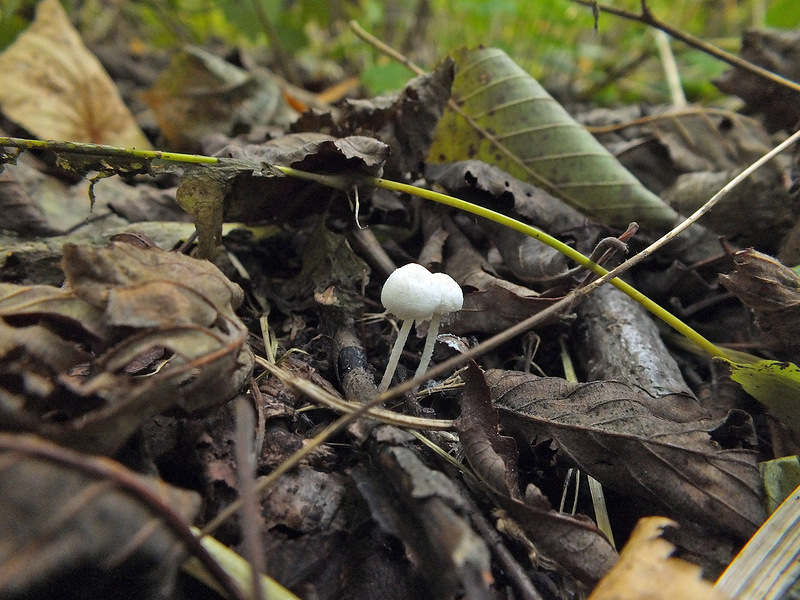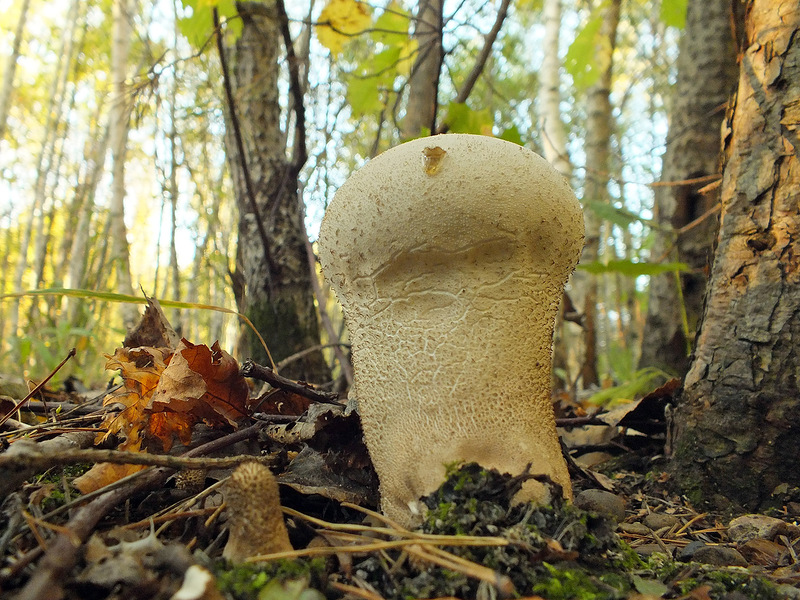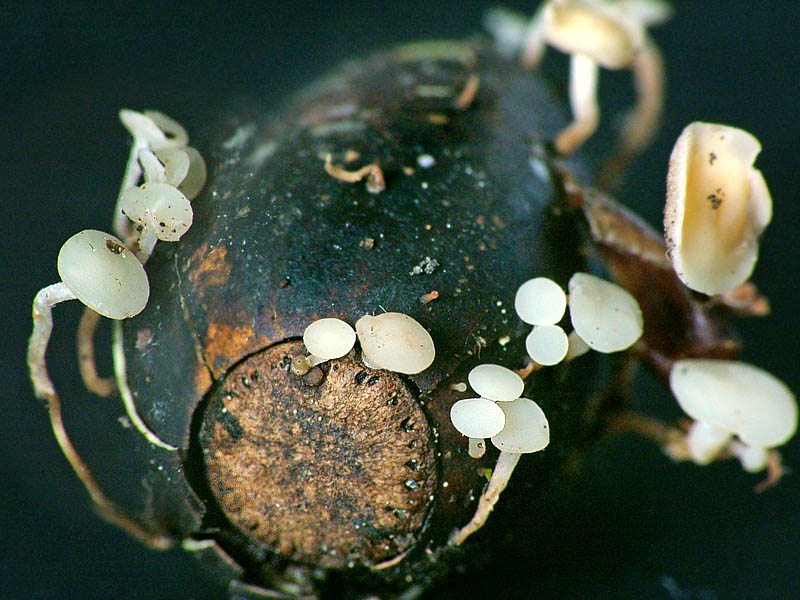Evaluation of the edibility of Seminuda cystolepiota
The edibility of this mushroom is unknown; therefore, the cystolepiota Seminuda is classified as an inedible species.

Related species
Red-lamellar lepiota is an edible mushroom. It is also called a ruddy umbrella for its delicate colors - a light pink hat and a light leg. The mushroom looks very elegant, its entire surface is smooth. At a young age, there is a ring on the leg. The mushroom has an average size - a hat with a diameter of about 6 centimeters and a leg 8-10 centimeters long.
Red-lamellar lepiots bear fruit practically throughout the entire season - from summer to autumn. They grow in gardens, in pastures, next to roads and in other places among the grass.
Sharp-scaled lepiota is a poisonous species of mushrooms. The shape of its cap is bell-shaped at first, and then it becomes umbrella-shaped, with a diameter of up to 10 centimeters. The color of the cap is rusty-brown. The surface of the cap is dotted with large pyramidal scales. The leg is cylindrical, up to 12 centimeters long, ocher brown. There is a thin, wide ring on it. The pulp is friable, white in color, gives off a nasty smell.

Lepiots bear fruit from August to September. They live in mixed forests, parks, and lawns. Choose rich soil. They can grow in groups or singly. This species is not common.
Definitioner
- Basidia (Basidia)
-
Lat. Basidia. A specialized structure of sexual reproduction in fungi, inherent only in Basidiomycetes. Basidia are terminal (end) elements of hyphae of various shapes and sizes, on which spores develop exogenously (outside).
Basidia are diverse in structure and method of attachment to hyphae.
According to the position relative to the axis of the hypha, to which they are attached, three types of basidia are distinguished:
Apical basidia are formed from the terminal cell of the hypha and are located parallel to its axis.
Pleurobasidia are formed from lateral processes and are located perpendicular to the axis of the hypha, which continues to grow and can form new processes with basidia.
Subasidia are formed from a lateral process, turned perpendicular to the axis of the hypha, which, after the formation of one basidium, stops its growth.
Based on morphology:
Holobasidia - unicellular basidia, not divided by septa (see Fig. A, D.).
Phragmobasidia are divided by transverse or vertical septa, usually into four cells (see Fig. B, C).
By type of development:
Heterobasidia consists of two parts - hypobasidia and epibasidia developing from it, with or without partitions (see Fig. C, B) (see Fig. D).
Homobasidia is not divided into hypo- and epibasidia and in all cases is considered holobasidia (Fig. A).
Basidia is the place of karyogamy, meiosis and the formation of basidiospores. Homobasidia, as a rule, is not functionally divided, and meiosis follows karyogamy in it. However, basidia can be divided into probasidia - the site of karyogamy and metabasidia - the site of meiosis. Probasidium is often a dormant spore, for example in rust fungi. In such cases, probazidia grows with metabasidia, in which meiosis occurs and on which basidiospores are formed (see Fig. E).

See Karyogamy, Meiosis, Gifa.
- Pileipellis
-
Lat. Pileipellis, skin - differentiated surface layer of the cap of agaricoid basidiomycetes. The structure of the skin in most cases differs from the inner flesh of the cap and may have a different structure. The structural features of pileipellis are often used as diagnostic features in descriptions of fungi species.
According to their structure, they are divided into four main types: cutis, trichoderma, hymeniderma and epithelium.
See Agaricoid fungi, Basidiomycete, Cutis, Trichoderma, Gimeniderm, Epithelium.
- Cutis
-
The type of cap skin, consists of creeping non-gelatinized hyphae located parallel to the surface.The surface of the cap looks smooth.
Lat. Cutis.
See Gifa.
- Apiculus (Apiculus)
-
1) Short outgrowth at the end of the spore;
2) The elongated short process of the basidiospore, by which it is attached to the sterigma.
See Gilar process.
Lepiota cristata (Lepiota cristata)
Other names:
- Agaricus cristatus
Lepiota crested Lepiota cristata
The cap is 2-5 cm in ∅, in young mushrooms it is convex, then flat-convex, with a reddish-brown tubercle, whitish, covered with concentrically located brownish-reddish scales.
The pulp is thin, white, at the break and reddening from the touch, with an unpleasant taste and a pungent rare odor.
The plates are free, frequent, white. Spore powder is white. Spores are rounded triangular.
Leg 4-8 cm long, 0.3-0.8 cm ∅, cylindrical, slightly thickened towards the base, hollow, even, smooth, yellowish or slightly pinkish. The ring on the leg is filmy, white or with a pinkish tinge, disappears when ripe.
Grows in coniferous, mixed and deciduous forests, meadows, pastures, vegetable gardens. Fruiting from July to October. It is also found in North America. It grows from June to September October in meadows, forest edges and lawns, pastures. It has a pungent, rare odor and an unpleasant taste.
The mushroom is inedible, possibly poisonous. It is found throughout Russia and belongs to the suspicious mushrooms. In Western European identifiers, it is sometimes noted as poisonous. Despite its some similarity with other species of this group, it has neither nutritional value nor edibility in any form. Accidental ingestion of food leads to severe poisoning, which can manifest itself in the form of vomiting and diarrhea, abdominal pain, cramps and headaches.
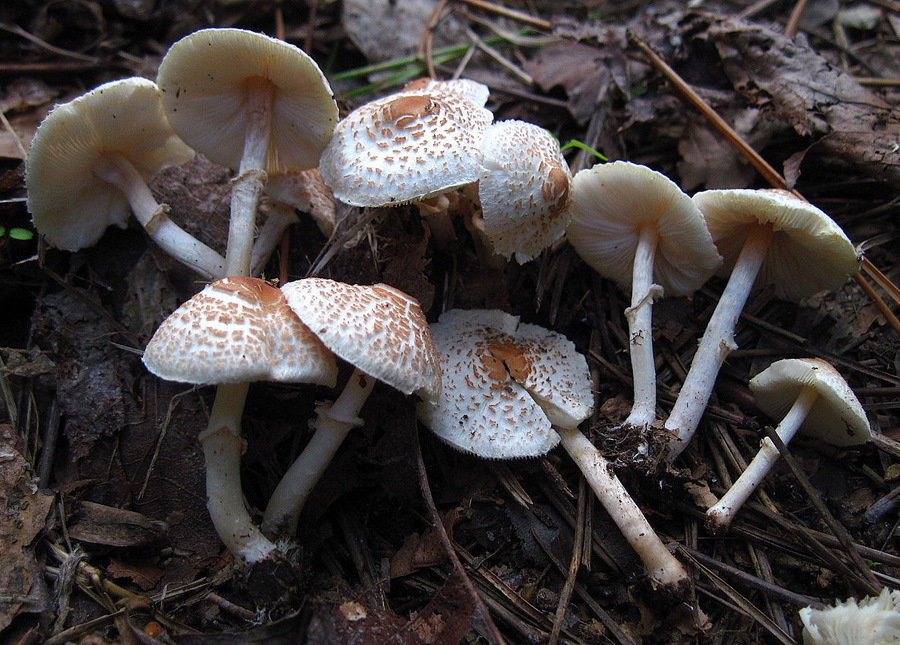
The comb umbrella is a bright representative of the Agaric family. These representatives of the forest flora are distinguished by a tendency to accumulate not only several types of toxic substances, but also radionuclides that affect the human body in a separate perspective.
Inexperienced collectors may confuse it with the edible fungus scutellus lepiota.
A distinctive feature is the location of peculiar growths on the outer side of the cap, which form scales in the form of a comb. It is for this reason that the mushroom received the name comb.
With age, the ring becomes completely indistinguishable. In individuals that have reached the final stage of development, the cap can be fully extended in the form of a concave saucer.
The pulp quickly turns red after any damage. Thus, poisons and toxins interact with the oxygen in the surrounding air.
The mushroom, when cut and broken, has an extremely unpleasant odor that resembles rotten garlic.
Lepiota swollen (Lepiota magnispora)
Synonyms:
Lepiota's cap is swollen:
Small, 3-6 cm in diameter, convex-bell-shaped in youth, hemispherical, opens with age, while a characteristic tubercle remains in the center of the cap. The color of the cap is white-yellowish, beige, reddish, with a darker area in the center. The surface is densely covered with scales, especially noticeable at the edges of the cap. The pulp is yellowish, the smell of mushroom, pleasant.
Swollen lepiota plates:
Loose, frequent, rather wide, almost white in youth, darken to yellowish or light cream with age.
Spore powder of lepiota swollen spore:
White.
The leg of the lepiota is swollen:
Quite thin, no more than 0.5 cm in diameter, 5-8 cm in height, fibrous, hollow, with a rapidly disappearing inconspicuous ring, cap color or darker in the lower part, all covered with coarse scales that darken with age. The flesh of the lower leg is also dark, reddish brown. In young mushrooms, the leg is covered with buffy flocculent coating.
Spreading:
Swollen lepiota is rare in August-September in forests of various types, usually appearing in small groups.
Similar species:
All members of the genus Lepiota are similar to each other.Swollen lepiota is formally distinguished by increased scaly of the leg and edges of the cap, but without microscopic examination it is very difficult to clearly determine the type of fungus.
Edible: According to some sources, the mushroom is edible. According to others, it is inedible or even deadly poisonous. All sources report that the nutritional qualities of representatives of the genus Lepiota are poorly studied.
Author's Notes: It is written in some places that many members of the genus Lepiota contain toxins similar to those that distinguish the pale grebe (Amanita phalloides). Bumping into such "sliding" references every now and then, it is difficult to restrain a simple thought: I wonder how many "pale toadstool poisonings" are these little umbrellas to blame? Doctors can be understood: they are not up to mycology, they need to be simpler and more practical. Found in the former body of the deceased toxins characteristic of a pale toadstool, and they write - poisoning with a pale toadstool. And how can you tell if it was a pale grebe, or some kind of lepiota? There is only one poison ...
Thus, the most creepy mushroom mystery - why are they still being poisoned by this pale toadstool, despite all the warnings? - may not be such a secret.
Lepiota subincarnata
Other names:

Lepiota pinkish (or Lepiota serrata or Lepiota incarnate or Umbrella serrate) (Latin Lepiota subincarnata) is a poisonous mushroom of the mushroom family (Agaricaceae).
It belongs to the deadly poisonous mushrooms and contains poisons such as cyanides, which cause fatal poisoning! It is to this opinion, categorically, that all respected sources about mycology and natural mushrooms agree.
Lepiota serrata (or serrata umbellate) is quite common in Western Europe and prefers to grow in copses and meadows, among the grass. Her active growth occurs in the summer, from mid-June, and it continues until the end of August.
Lepiota serrata (or serrata umbrella) refers to lamellar mushrooms. Its plates are wide, very frequent and loose, cream-colored with a slightly noticeable greenish tinge. Her cap is very small, convex-outstretched or flat-outstretched, with edges slightly lowered inward, buffy-pinkish, completely covered with pressed scales, wine-brown in color, strewn chaotically. The stem is medium, cylindrical, with a very characteristic, but barely pronounced fibrous ring in the middle, light gray (above the ring, towards the cap) and dark gray (below the ring, towards the base). The pulp is dense, in the cap and upper part of the leg is creamy, in the lower part of the leg with a hint of something meaty. It is strictly forbidden to taste serrata lepiota, this mushroom is deadly poisonous !!!
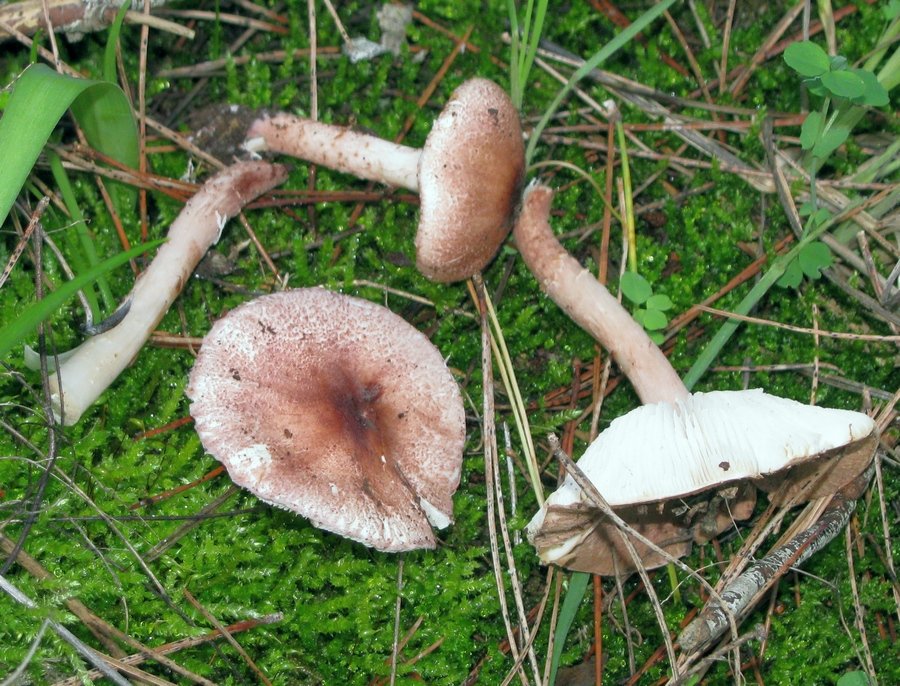
The genus of lepiota originated from the Latin name, while the Russian dictionary synonym for this kind of mushrooms is umbrellas. Lepiots are very close to umbrella mushrooms and differ from them in the somewhat smaller size of their fruit chalk. And all the other main generic characteristics, such as: a cap with a stem in appearance, resembling an open umbrella, an immobile fibrous ring around the stem and mica or fibrous scales on the surface of the cap, are fully observed. Lepiots belong to saprophytes, that is, they decompose plant residues on the soil. The genus of lepiota includes more than 50 species studied, among which 7 are poisonous, and 3 of them are deadly poisonous, and several are suspicious of deadly poisonous mushrooms. There are also little-known edible species in the genus Lepiota, such as the small thyroid umbrella. But, due to the difficulty of determining lepiots and the presence of dangerous poisonous species in their genus, it is generally not recommended to collect and use them for food! Deadly poisonous from the genus Lepiota, which are found in Europe, Russia and, in the territories adjacent to them, are as follows: scaly lepiota, poisonous lepiota and serrate lepiota; poisonous: this is chestnut lepiota; and inedible, with high suspicion of poisonous species, - crested lepiota, rough lepiota, thyroid lepiota and swollen lepiota.
Seminuda cystolepiota what it looks like, where it grows, edibility, how to distinguish it, photo
Cystolepiota Seminuda: description and photo
Cystolepiota seminuda is considered a representative of the Agaricaceae family, the genus Cystolepiota. It belongs to the traditional species, it is considered not very popular and very rare. Actually, due to their small size, these representatives rarely catch the eye of mushroom pickers.

How cystolepiota Seminuda looks like
Cystolepiota Seminuda is a very small mushroom. The diameter of the cap can reach no more than 2 cm. In a young specimen, it has a rounded-conical shape, closed from below with a compacted, slightly granular blanket. As it grows, the cap straightens and takes on a wide-conical or convex shape with a pronounced tubercle in the very center. A mature specimen has a spread cap with a low blunt tubercle in the middle, while the remains of the bedspread completely disappear. The color is white, after which a pink or fawn tint appears in the very center.
The plaque on the surface of the cap also changes. A young specimen has a flaky structure, after which it changes to granular, and then completely disappears, leaving the surface completely smooth and bare.
Frequently placed, thin, rather narrow, free plates are shown under the head. Their color is creamy or slightly yellowish. Spores in the mass have a shade of white.
The leg reaches up to 4 cm, while it is super thin, with a diameter of only 0.2 cm. Its shape is cylindrical, straight, not always curved. In the middle, the leg is hollow, on the outside it is smooth with a delicate granular bloom, which also disappears with age. Its color is darker than the cap and can vary from yellow-pink to fawn. At the very base, the leg is reddish or slightly gray in color.
The pulp of the fruiting body is superfine, fragile. On the cut, the caps are white, the legs are pinkish. It has almost no aroma or gives off an unpleasant potato aroma.
Where do the cystolepiota of Seminuda grow
The cystolepiota seminuda mushroom belongs to a rare species, but it grows everywhere, in fact, in various regions of Russia. Prefers deciduous and mixed forests. Grows in fallen foliage or among twig, coniferous litter.
The fruiting period is between July and September. Grows in groups, fruiting bodies grow singly infrequently.
Is it possible to have cystolepiota Seminuda
There is no reliable information about the edibility of cystolepiota Seminuda. Eating situations have also not been confirmed. Therefore, this type of mushroom is classified as inedible.
Conclusion
Seminuda cystolepiota is considered a rather remarkable mushroom, which can be distinguished from similar small-sized porcini mushrooms by the presence of scraps of a bedspread in the form of triangular teeth along the edge. But the actual small size still makes this look virtually invisible to the human eye.
Description of cystolepiota Seminuda
The diameter of the cap of the Seminuda cystolepiota is small - 1.5-2 centimeters. The shape of the cap is initially rounded-conical; at the bottom, the hymnophore is covered with a granular dense veil. Over time, the shape of the cap becomes wide-conical or convex, and a tubercle is noticeable in its center. Even later, the form becomes widespread.

On the surface of the cap there is a delicate flaky powder coating. Often a flaky border hangs along the edge of the cap. The caps of old mushrooms become bare. The color of the cap is white or pinkish, and the top is fawn.
Under the cap are narrow, loose, thin, often spaced plates. The color of the plates is cream or yellowish. Spore white powder. The pulp is fragile, thin, white in the cap, and pink in the stem. As a rule, the pulp does not have a special smell, but an unpleasant smell similar to raw potatoes may be present.
The leg is of medium length - about 4 centimeters, and a diameter of 0.1-0.2 centimeters. The leg is cylindrical in shape. The inner part of the leg is hollow. There is a delicate granular coating on the surface of the leg. The color of the leg is pinkish, yellow-pink or fawn. The base of the stem is reddish. With age, the white grains fall off, and she becomes naked.

Places of distribution of Seminuda cystolepiota
Fruiting cystolepiota seminuda from July to September. These mushrooms can be found in deciduous and mixed forests. They settle on the soil, among the litter of leaves or twigs. They meet in groups. Seminuda cystolepiota is a rather rare type of mushroom.
Similarity of Seminuda cystolepiota with other mushrooms
Seminuda cystolepiota is outwardly similar to corymbose lepiota, but cystolepiota can be distinguished due to pink shades and the absence of scales on the cap.

